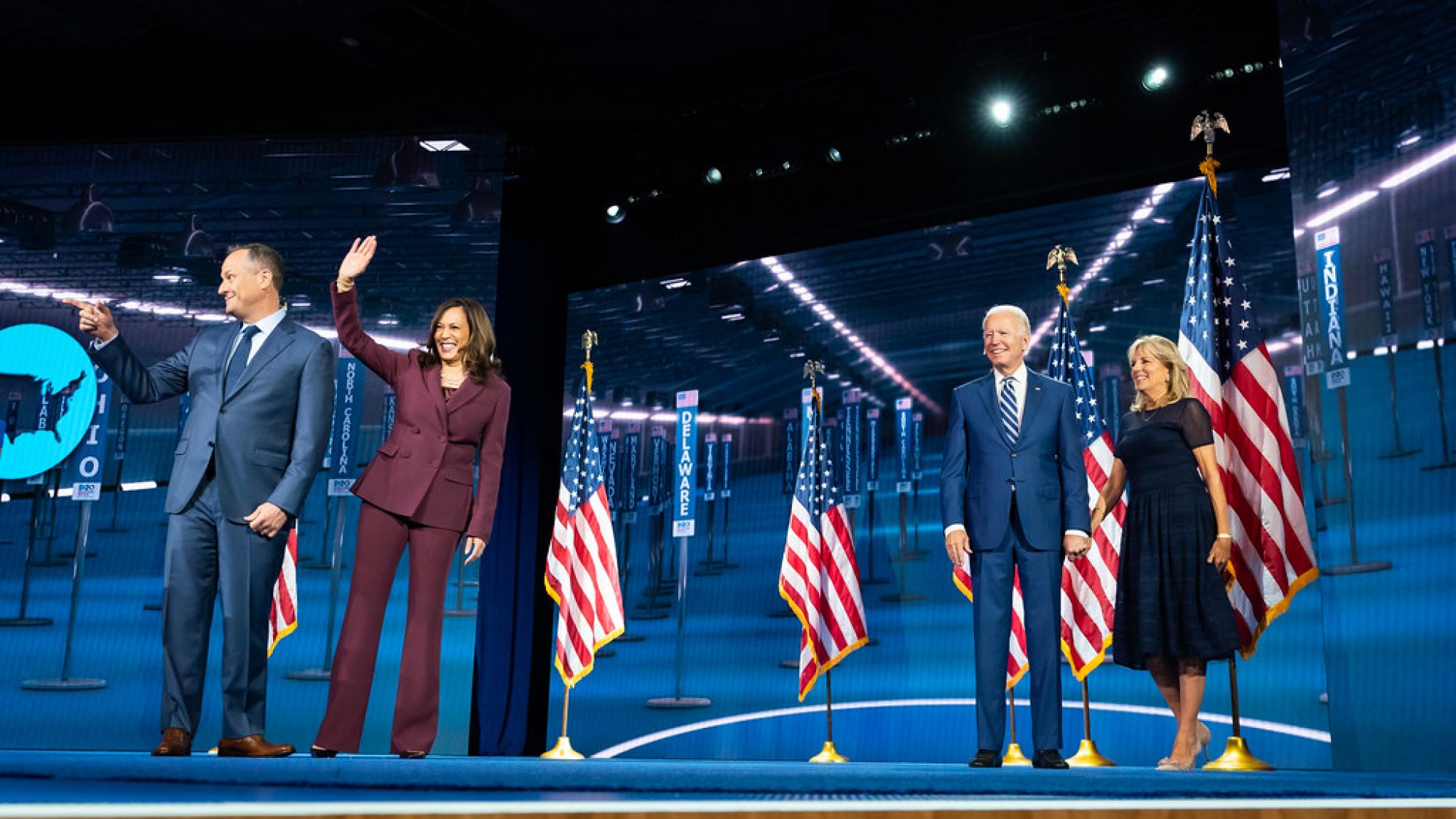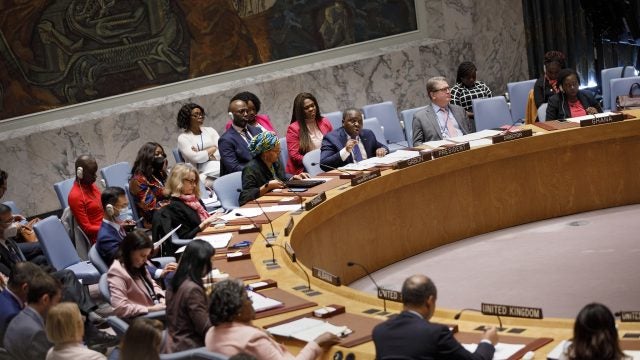
Title: Bridging the Gender Divide is Key to US Global Fragility Strategy Implementation
The US Global Fragility Strategy is an unparalleled opportunity for the United States to lead a global effort to end violent conflict. However, this strategy—and all ensuing foreign assistance—must be gender inclusive in order to achieve the intended results. Lauren Mooney highlights four areas where the Biden administration can advance and implement a gender-sensitive strategy to promote stability worldwide.
As the Biden-Harris administration takes office, it will be tasked with the full implementation of the Global Fragility Act (GFA), which aims to tackle the root causes of fragility and conflict around the world—the first-ever of its kind. To maximize impact and operationalize a multidimensional vision for peace, the US government must ensure that the gendered dimensions of violent conflict are mainstreamed in its implementation. The Biden-Harris platform already emphasized the importance of advancing women’s leadership in peace and security, and now is the time to put these words into action.
As part of the GFA, the US government recently released its Strategy to Prevent Conflict and Promote Stability. The strategy rightly notes its integration with various policy initiatives, including the US Women, Peace and Security (WPS) Strategy. According to the Global Fragility Strategy (GFS), the United States will work with partner governments to expand women’s roles in peace and security, protect them from harm, and commit to new standards in gender analysis. However, these and other cursory references are not enough. As the United States asserts its leadership in reducing fragility and mitigating conflict, it should make gender inclusion central to the GFS’s implementation.
Stalling Momentum: Gender Equality and Security
Integrating gender into the GFS takes on renewed urgency as populist and fundamentalist backlash on women’s rights surges and the COVID-19 pandemic exacerbates gender inequalities. In Afghanistan, for example, the pandemic has already significantly inhibited access to education for women and girls. In Yemen, the pandemic’s pressure on the fragile health system threatens to further accelerate restrictions on women and girl’s human rights. Violence against girls and women has surged, with UN Women calling this trend a “shadow pandemic.”
The imperative for gender inclusion in peacebuilding is clear: inclusive institutions are a cornerstone of peaceful and well-governed societies. There is a wealth of research that suggests that women’s inclusion leads to more durable peace agreements, and that countries with higher levels of gender equality are less prone to conflict. When women are included in a peace process, it is twenty percent more likely to last at least two years. If women help devise a peace agreement, it is thirty-five percent more likely to last for fifteen years.
The US government would also be shrewd to learn from the pitfalls associated with previous gender-blind security approaches. When states have failed to integrate a gender perspective in counterterrorism and preventing/countering violent extremism (P/CVE) strategies, such strategies not only yielded mixed results, but also risked the perpetuation of stereotypes and discrimination. For example, this has sometimes resulted in impunity for gender-based violence, lack of nuanced understanding of the gendered factors of both VE recruitment as well as demobilization, or failure to effectively engage women’s groups and girls in P/CVE.
In the GFS implementation plans and country strategies, the Biden administration should consider four main recommendations—outlined below—to achieve its objectives of ending violent conflict and promoting long-lasting stability.
Connecting the Dots: How to Center Gender Equality in the US Global Fragility Strategy
First, in implementing the GFS, the US government should help promote change across the global security system by helping transform institutions traditionally restrictive of gender equality. Typically, US foreign assistance has simply analyzed and advanced the various roles of individual women and men in conflict. However, gendered institutions and ideologies mostly tend to resist change even as roles may shift during a conflict or crisis. One such shift may include women taking on the role of the breadwinner. However, experts have highlighted the localized cultural barriers that impede women from achieving equality and enjoying human rights. Backlash can sometimes erupt against women’s increased empowerment and agency during conflict, especially where notions of masculinity may enable conflict. These are also embodied in legal discrimination: for example, about 2.7 billion women around the world are legally restricted from working in the same jobs as men, including in politics.
The strategy presents an unparalleled opportunity to effect lasting change and reduce structural barriers that inhibit development and security prospects. While women’s leadership in peacebuilding should remain a primary goal, this must be reinforced by concrete steps to strengthen the enabling environment for gender equality in the long term by confronting discriminatory laws and social norms. The United States should make women’s human rights protection a strategic priority and apply diplomatic pressure to enforce accountability and oversight for harmful gender norms. Complementing the WPS strategy, gender inclusion should guide any partnerships with governments at the national, regional, and local levels.
Second, the United States, in identifying local partnerships to promote stability, should assess their views on gender norms and commitment to gender equality. Partnering with locally legitimate actors to manage conflict will likely be key to GFS implementation, as enshrined in the US Stabilization Assistance Review. Actors deemed to be legitimate vary widely across regions and even within a country and so do each of the actor’s promotion of gender (in)equality. In its pursuit of leveraging the legitimacy of local actors, the US government should understand whether an actor perpetuates harmful gender norms, and if that is the case, then adapt accordingly. In so doing, it can more effectively prevent women’s rights from being rolled back as a concession to advance stability. To advance and center its commitment to democratic principles, the United States should craft foreign assistance programming that helps local actors and systems to become more inclusive and representative.
Third, the US government should use foreign assistance funded programming to create a civil and political environment where women are safe to voice opinions. In conflict-affected contexts, women are subjected to security risks in public spaces more broadly, let alone participate in human rights activism. For example, in Sri Lanka, female activists documenting war crimes in grassroots areas have been placed under surveillance. And women in politics are commonly bombarded with an onslaught of harassment and threats.
The Biden administration must be steadfast in its commitment to protect women’s human rights in the context of building peace and stabilizing conflict. Any effective foreign assistance intervention must be enhanced by efforts to counteract additional risks or challenges encountered by beneficiaries, including by providing more support to monitor, prevent, and protect them from harassment and intimidation. Too often, ensuring gender parity becomes a box-checking exercise instead of addressing or mitigating structural barriers that inhibit women’s participation. The US government should advance interventions that galvanize disparate groups around shared interests in counteracting human rights violations experienced by women, girls, and gender and sexual minorities. Promoting a strategic and holistic approach to gender inclusion—in line with the WPS pillars of participation, protection, prevention, and relief and recovery—is critical to ending conflict and sustaining peace.
Finally, as the Biden administration seeks to strengthen multilateral approaches to global security challenges, it should seize the opportunity to enhance both global and local collaboration on political inclusion in forums like the Summit for Democracy. There are promising approaches and lessons learned at the global, regional, and local levels that can be amplified in advancing inclusive development and security. Canada offers a good example of integrating gender equality across all international assistance, including project design, implementation, monitoring, and evaluation.
Moreover, as the US government monitors the in-country progress of the GFS, it should enforce accountability for effective implementation and ensure the meaningful representation of subnational WPS actors by consistently collecting locally informed results and making necessary adaptations. This includes creating the space for inclusion and representation across intersecting social and political identities. According to the NGO working group on women, peace, and security, “race, ethnicity, religion, class, SOGIESC, age, marital status, pregnancy status, disability, migratory status, geographic location, economic status and other characteristics can be sources of both oppression and resilience.”
The Way Forward
The US Global Fragility Strategy will be key to protecting and advancing national security interests. The Biden administration should guarantee its efficacy by making gender inclusion a cornerstone in its implementation.
The long-term vision for gender equality and peace does not come at the expense of adaptive and responsive stabilization efforts. Striking the right balance undeniably involves addressing the most pressing and complex gender and security challenges. But above all, the United States must be responsive to the ways in which gender shapes the conflict landscape. Implementing a gender-blind strategy not only harms US interests in promoting security, but also threatens hard-won gains in gender inclusion worldwide.
. . .
Lauren Mooney is a senior specialist for conflict prevention and stabilization at the International Republican Institute (IRI), a nonprofit, nonpartisan organization committed to advancing democracy and governance worldwide.
Image Credit: Adam Schultz (via Creative Commons)
Recommended Articles

This article explores the uncertain future of Arctic governance amid shifting global geopolitics. It argues that whether Washington and Moscow opt for confrontation or cooperation, multilateralism in the Arctic…

Twenty-five years ago, the United Nations Security Council adopted Resolution 1325, establishing a framework that underpins the Women, Peace, and Security (WPS) Agenda. The Resolution recognized both the…

When we analyze conflicts in the Middle East, we are not analyzing conflicts with isolated impacts but risks for global energy security. Recent conflicts in the Middle East have highlighted…